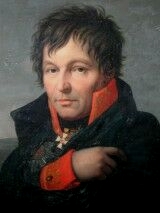Body system

The Krümpersystem is a system developed by Gerhard Johann David von Scharnhorst , with which the limitation of the Prussian army was circumvented in the years 1808 to 1812, during the Napoleonic Wars . It is also considered a preliminary stage of the later national armed forces and the later general conscription .
The system
After Prussia's defeat in the war in 1806/07 , the chairman of the military reorganization commission , Major General von Scharnhorst, proposed in July 1807 that a reserve army be created. Every year a certain number of trained soldiers should be released and replaced by recruits . For this proposal and some other designs which originated "Cabinet Order concerning the formation of a war reserve" of 6 August 1808. After that, since the fall of 1808 in every company 3-5 or more soldiers a month on leave and it pulled as many recruits, trained and after 4 Weeks, later after 2 months, released again. These short-term trained soldiers were called Krümper .
Through these measures, the limitation of the presence of the standing army to 42,000 men set in the Peace of Tilsit by Napoleon I for Prussia and the prohibition on the establishment of a militia and reserve facilities were observed, but at the same time the rapid training of the recruits and their premature Dismissed as Krümper ("Krumme"), a war-ready reserve force was created.
Since 1809 the drafted recruits were no longer dismissed, but soldiers who had served for many years and who were also listed as crumbs in the regimental lists were eliminated in their place. In 1811 a cabinet order stipulated that in future eight recruits would be trained in each company and three recruits in each squadron . As early as the autumn of 1812, 33,337 field and 3,087 garrison- compatible bodies were available.
The Krümpersystem created a military reserve and was the prerequisite for the rapid formation of a capable army in the Napoleonic War of 1813/14 .
literature
- Hansjürgen Usczeck: Scharnhorst. Theorist, reformer, patriot. His work and its impact in his and for our time , Military Publishing House of the German Democratic Republic , Berlin 1974, p. 205 ff.
- Roland G. Foerster: Conscription. Origin, manifestations and politico-military effect . Wissenschaftsverlag Draft, Oldenbourg, Munich 1994, ISBN 3-486-56042-5 , p. 44.
- Dictionary of German military history . Military Publishing House of the German Democratic Republic, Berlin 1985, vol. 1, p. 437 f.